Manchester, Greater Manchester, England, UK 作者: 来源: 发布时间:2021-01-11
I. Population and Area
Continent: Europe
Country: The U.K
State/Province: England
City/Town: Manchester, Greater Manchester
Total Area: 44.63(sq mi)
Population in 2018: 54.76(thousand)
II. Natural Geography (environment and resources)
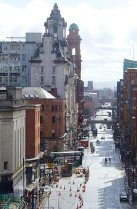
Metrolink (tram)
Manchester Metrolink is the largest tram system in the UK, with a total route length of 57 miles (92 km).
Manchester became the first city in the UK to acquire a modern light rail tram system when the Manchester Metrolink opened in 1992. In 2016–2017, 37.8 million passenger journeys were made on the system. The present system mostly runs on former commuter rail lines converted for light rail use, and crosses the city centre via on-street tram lines. The network consists of eight lines with 99 stops. A new line to the Trafford Centre opened in 2020. Manchester city centre is also serviced by over a dozen heavy and light rail-based park and ride sites.
Bus
Free buses operate on three routes around Manchester city centre. Each bus departs every 10 minutes, Monday to Saturday.
The city has one of the most extensive bus networks outside London, with over 50 bus companies operating in the Greater Manchester region radiating from the city. In 2011, 80 per cent of public transport journeys in Greater Manchester were made by bus, amounting to 220 million passenger journeys each year. After deregulation in 1986, the bus system was taken over by GM Buses, which after privatisation was split into GM Buses North and GM Buses South. Later these were taken over by First Greater Manchester and Stagecoach Manchester. Much of the First Greater Manchester business was sold to Diamond Bus North West and Go North West in 2019. Go North West operate a three-route zero-fare bus service, called "Metroshuttle", which carries 2.8 million commuters a year around Manchester's business districts. Stagecoach Manchester is the Stagecoach Group's largest subsidiary and operates around 690 buses.
Air
Manchester Airport serves Manchester, Northern England and North Wales. The airport is the third busiest in the United Kingdom, with over double the number of annual passengers of the next busiest non-London airport. Services cover many destinations in Europe, North America, the Caribbean, Africa, the Middle East, and Asia (with more destinations from Manchester than any other airport in Britain). A second runway was opened in 2001 and there have been continued terminal improvements. The airport has the highest rating available: "Category 10", encompassing an elite group of airports able to handle "Code F" aircraft, including the Airbus A380 and Boeing 747-8. From September 2010 the airport became one of only 17 airports in the world and the only UK airport other than Heathrow Airport and Gatwick Airport to operate the Airbus A380.
Canal
An extensive canal network, including the Manchester Ship Canal, was built to carry freight from the Industrial Revolution onward; the canals are still maintained, though now largely repurposed for leisure use.In 2012, plans were approved to introduce a water taxi service between Manchester city centre and MediaCityUK at Salford Quays. This ceased to operate in June 2018, citing poor infrastructure.
Cycling
Further information: Cycling in Greater Manchester
Cycling for transportation and leisure enjoys popularity in Manchester and the city also plays a major role in British cycle racing.
III. GDP
62 billion
Greater Manchester has a total GDP of 62 billion, West Midlands has a total GDP of 122 billion but less than the €85.700 bn in Greater Dublin and €950.379 bn in Greater London.
IV. Industrial Characterisitics
Major industries:Manchester is the business and financial center of northern New England and is home to several key industry clusters, including semiconductors, electronics, aerospace and defense, apparel and textiles, communication services, industrial machinery and financial services.
Big project:The Manchester Project
Details: it is a registered Non Profit Organization 501(c)3. We are dedicated to Spreading ALS(Lou Gehrig’s Disease) awareness, Raising Funds for, viable and leading edge, Treatments for ALS through our Outreach(Bringing pALS to entertaining events), Gifting programs and Continue to educate our ALS Family which will allow our pALS(people with ALS) to live happier and more productive lives , the global economy is extremely well represented in Manchester. Our highly technological companies, manufacturing firms, and corporations thrive, as do the career paths of the people who keep them running. Are you looking for new facility construction? Newly refurbished space along the Merrimack River? Space in one of our new business or industrial parks or a quaint spot in our historic Millyard? Manchester can certainly accommodate.
V. Attractions
1. Castlefield:
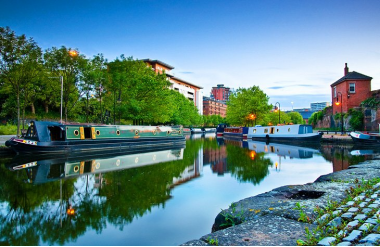
Designated an "Urban Heritage Park," Castlefield is an excellent place to begin exploring Manchester, and a walk among the lovingly restored Victorian houses along the old canals or through the reconstructed Roman Fort is time well spent. Be sure to explore the Bridgewater Canal, constructed in 1761 to transport coal from the mines at Worsley to Manchester, and the many old warehouses that have been restored and turned into offices, shops, hotels, and restaurants. (A trip on one of the Bridgewater tour boats is highly recommended.)
2. Museum of Science and Industry:
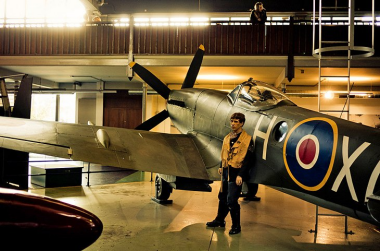
The Museum of Science and Industry (MOSI) is on the site of the world's oldest railroad station. Its 12 galleries include the Power Hall, with water and steam-driven machines from the golden age of the textile industry, as well as vintage made-in-Manchester cars, including a rare 1904 Rolls Royce. The history of the city from Roman times through the Industrial Revolution to the present day is documented in the Station Building. The Air and Space Gallery is another must-see and is home to numerous historic aircraft, including a replica of Triplane 1 by A. V. Roe, the first British plane to successfully fly.
3. Manchester Cathedral:
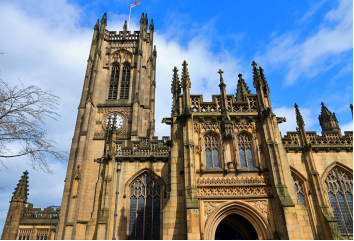
Perched on the banks of the Irwell, Manchester Cathedral dates mostly from 1422 to 1506 and was raised to cathedral status in 1847. Particularly attractive are its chapels on both sides of the nave and choir, built between 1486 and 1508 with further additions and alterations in almost every subsequent century. Particularly notable are the choir stalls, with some of the most richly decorated misericords in the country. St. John's Chapel is the chapel of the Manchester Regiment, and the little Lady Chapel has a wooden screen dating from 1440. The octagonal chapterhouse, built in 1465, has murals that include a figure of Christ in modern dress.
VI. History
The Brigantes were the major Celtic tribe in what is now known as Northern England; they had a stronghold in the locality at a sandstone outcrop on which Manchester Cathedral now stands, opposite the bank River Irwell. Their territory extended across the fertile lowland of what is now Salford and Stretford. Following the Roman conquest of Britain in the 1st century, General Agricola ordered the construction of a fort named Mamucium in the year 79 to ensure that Roman interests in Deva Victrix (Chester) and Eboracum (York) were protected from the Brigantes. Central Manchester has been permanently settled since this time. A stabilised fragment of foundations of the final version of the Roman fort is visible in Castlefield. The Roman habitation of Manchester probably ended around the 3rd century; its civilian settlement appears to have been abandoned by the mid-3rd century, although the fort may have supported a small garrison until the late 3rd or early 4th century. After the Roman withdrawal and Saxon conquest, the focus of settlement shifted to the confluence of the Irwell and Irk sometime before the arrival of the Normans after 1066. Much of the wider area was laid waste in the subsequent Harrying of the North.
VII. Culture
Music
The Gallagher brothers of Oasis
Bands that have emerged from the Manchester music scene include Van der Graaf Generator, Oasis, The Smiths, Joy Division and its successor group New Order, Buzzcocks, The Stone Roses, The Fall, The Durutti Column, 10cc, Godley & Creme, The Verve, Elbow, Doves, The Charlatans, M People, The 1975, Simply Red, Take That, Dutch Uncles, Everything Everything, Pale Waves and The Outfield. Manchester was credited as the main driving force behind British indie music of the 1980s led by The Smiths, later including The Stone Roses, Happy Mondays, Inspiral Carpets, and James. The later groups came from what became known as the "Madchester" scene that also centred on The Haçienda nightclub developed by the founder of Factory Records, Tony Wilson. Although from southern England, The Chemical Brothers subsequently formed in Manchester.[155] Former Smiths frontman Morrissey, whose lyrics often refer to Manchester locations and culture, later found international success as a solo artist. Previously, notable Manchester acts of the 1960s include The Hollies, Herman's Hermits, and Davy Jones of the Monkees (famed in the mid-1960s for their albums and their American TV show), and the earlier Bee Gees, who grew up in Chorlton. Another notable contemporary band from near Manchester is The Courteeners consisting of Liam Fray and four close friends. Singer-songwriter Ren Harvieu is also from Greater Manchester.
Performing arts
The Opera House, one of Manchester's largest theatre venues
Manchester has a thriving theatre, opera and dance scene, with a number of large performance venues, including Manchester Opera House, which feature large-scale touring shows and West End productions; the Palace Theatre; and the Royal Exchange Theatre in Manchester's former cotton exchange, which is the largest theatre in the round in the UK.
Smaller venues include the Contact Theatre and Z-arts in Hulme. The Dancehouse on Oxford Road is dedicated to dance productions. In 2014, HOME, a new custom-built arts complex opened. Housing two theatre spaces, five cinemas and an art exhibition space, it replaced the Cornerhouse and The Library Theatre.
Since 2007 the city has hosted the Manchester International Festival, a biennial international arts festival with a focus on original work, which has included major new commissions by artists, including Bjork. A government statement in 2014 announced a £78 million grant for a new "large-scale, ultra-flexible arts space" for the city. Later the council stated it had secured a further £32 million. The £110 million venue was confirmed in July 2016. The theatre, to be called The Factory, after Manchester's Factory Records, will provide a permanent home for the Manchester International Festival. It is due to open at the end of 2019.
VIII. Other information
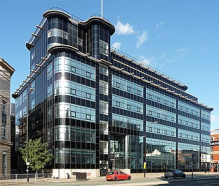
The 1930s Daily Express Building, Manchester, a remnant of Britain's "second Fleet Street"
The Guardian newspaper was founded in the city in 1821 as The Manchester Guardian. Until 2008, its head office was still in the city, though many of its management functions were moved to London in 1964. For many years most national newspapers had offices in Manchester: The Daily Telegraph, Daily Express, Daily Mail, Daily Mirror, The Sun. At its height, 1,500 journalists were employed, earning the city the nickname "second Fleet Street". In the 1980s the titles closed their northern offices and centred their operations in London.
IX. Contact information
Mayor/Officer: Andy Murray Burnham
Tel: (603) 624-6500
Website Shortcut: manchesternh.gov/Mayor
